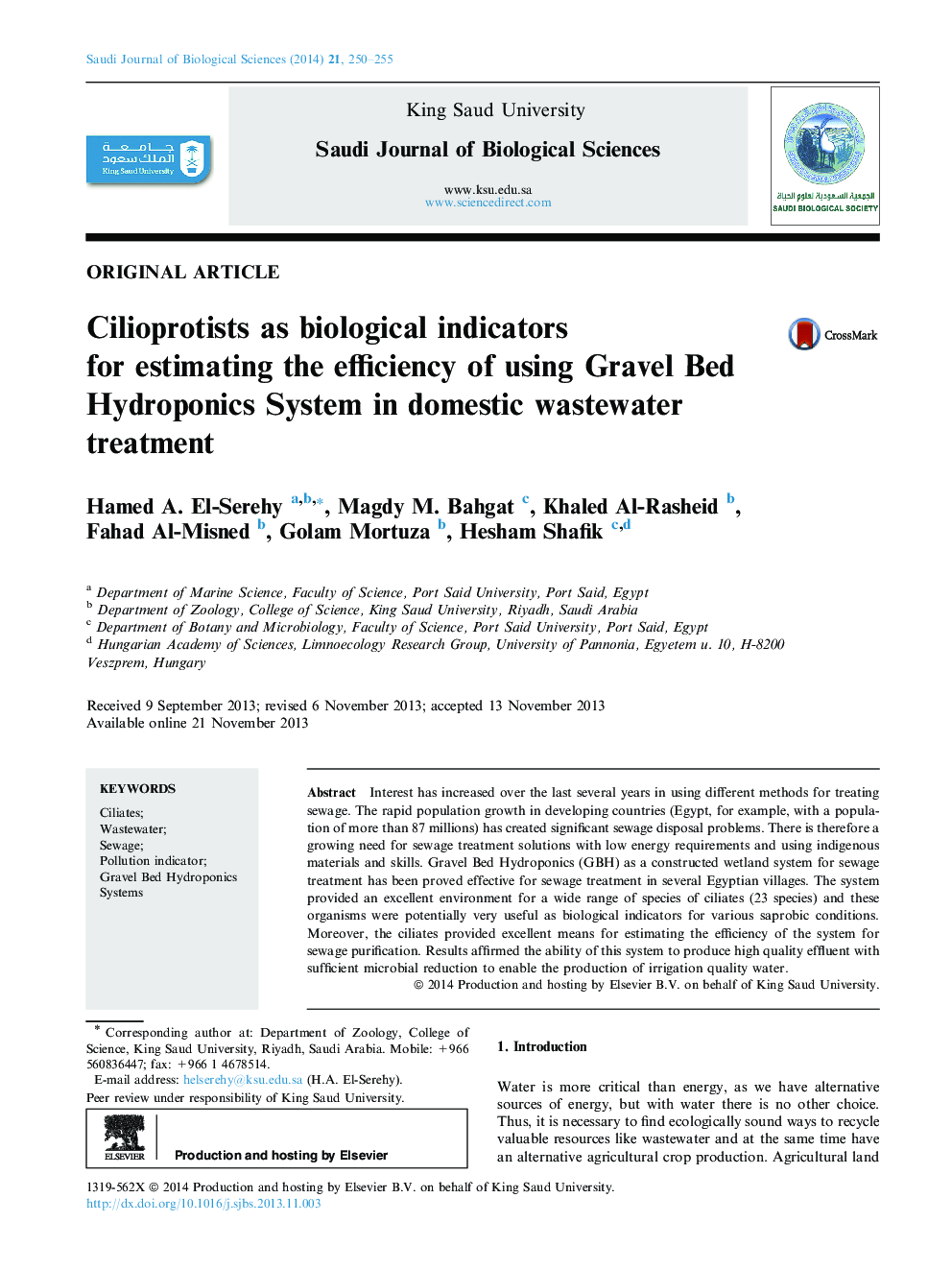| Article ID | Journal | Published Year | Pages | File Type |
|---|---|---|---|---|
| 4406214 | Saudi Journal of Biological Sciences | 2014 | 6 Pages |
Interest has increased over the last several years in using different methods for treating sewage. The rapid population growth in developing countries (Egypt, for example, with a population of more than 87 millions) has created significant sewage disposal problems. There is therefore a growing need for sewage treatment solutions with low energy requirements and using indigenous materials and skills. Gravel Bed Hydroponics (GBH) as a constructed wetland system for sewage treatment has been proved effective for sewage treatment in several Egyptian villages. The system provided an excellent environment for a wide range of species of ciliates (23 species) and these organisms were potentially very useful as biological indicators for various saprobic conditions. Moreover, the ciliates provided excellent means for estimating the efficiency of the system for sewage purification. Results affirmed the ability of this system to produce high quality effluent with sufficient microbial reduction to enable the production of irrigation quality water.
